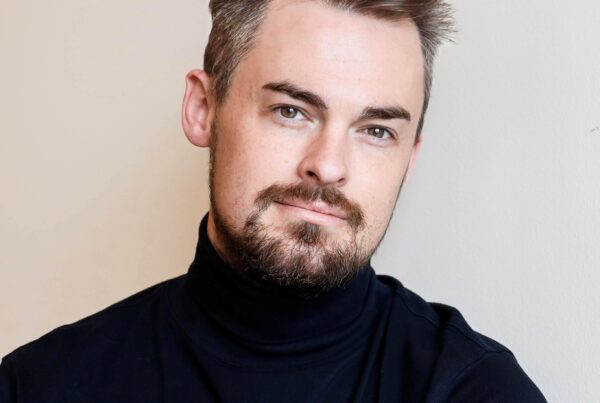From D’Oyly Carte to State Opera South Australia’s G&S Fest, the history of Gilbert & Sullivan comes with enough dramatic twists and turns fit for its own operetta. With just over two months until Adelaide’s first ever G&S Fest opens, State Opera South Australia is taking a look at Gilbert & Sullivan’s colourful past, their personal lives and what inspired their famous works.
William Schwenck Gilbert was born in London in 1836 to parents William and Anne. He had a tumultuous relationship with his parents which embedded cynicism and tainted wit from an early age, leading him to become the king of the one-liner.
Arthur Sullivan was born in London several years later in 1842 to Thomas and Mary. Musically inclined from an early age, his talent was nurtured by his parents, becoming proficient with all band instruments by the age of 8.
However, the two did not meet until 1871 when Sullivan was asked by the manager of the Gaiety Theatre to collaborate on a Christmas piece already written by Gilbert. The result was their first piece Thespis which saw a good run of performances.
A few years later, Richard D’Oyly Carte, who had seen the production of Thespis, brought the two together again to create a curtain raiser to Offenbach’s La Perichole. The one act drama Trial by Jury was born and became a huge hit.
Often discarded as a minor work, Trial by Jury marked the beginning of the pair developing their ‘sound’ as a way to satirise a number of Victorian institutions through musical interpretation. In Trial by Jury, the judicial system is ridiculed and turned topsy-turvy by a banal breach of promise case. The echoes of grand Italian opera tunes and their rendering of the comical and ludicrous atmosphere of the courtroom combine to make Trial by Jury a key example of what would become their familiar witty words and catchy tunes.
D’Oyly Carte had a real ambition to develop an English form of light opera that would displace the bawdy burlesques and badly translated French operettas then dominating the London stage.
After the success of Trial by Jury, he was convinced that the collaboration of these two men could serve to realise his vision to present English comic opera on the London stage.
D’Oyly Carte’s first commission was The Sorcerer in 1877 at the Opera Comique in London which explored themes of meddling with nature and fate. However, drama began to surround the partnership of Gilbert & Sullivan. The role of John Wellington Wells was originally written for Fred Sullivan, brother of Arthur, who had played The Judge in Trial by Jury. However, Fred passed away before the opening and the role was taken over by George Grossmith who officially joined the Gilbert & Sullivan troupe playing several leading roles for the next 12 years.
Following this success was H.M.S. Pinafore a year later in 1878. The first big Gilbert & Sullivan ‘hit’, the duo poked fun at the English obsession with class and social status. A tongue-in-cheek look at the rigid class structure of the time and how the unqualified could rise to power are themes still pertinent in today’s society and underpin Gilbert & Sullivan’s timeless quality.
However, the popularity of Gilbert & Sullivan began to spiral out of control as, due to a failure to copywrite their work in America, hundreds of unofficial, pirated productions began popping up across the pond. With no restrictions in place, interpretations and adaptations played across the country, with several productions being performed on the same street.
Thus, in 1879, the aptly named Pirates of Penance became their next work. The first piece to premiere in New York rather than London, Sullivan wrote most of the score in a hotel room in the city. A great parody of the British military, the piece drew from both Gilbert & Sullivan’s own personal histories.
When Gilbert was just 2 years old, he was kidnapped from the family maid in Naples by a band of Italian bandits. For a small fortune of £25, his parents were able to win back their son.
Whether true or not, the dramatic story had a profound effect on Gilbert’s storytelling leading him to create Ruth, the foolish nursery maid.
Sullivan also called upon his own experiences as a youth when writing music for the troupe of policemen. When he was an organist at St Michaels’ church in Chester Square, he augmented his choir, which lacked basses and tenors, with volunteers from the local police station. “I used to think of them sometimes” he wrote, “when I was composing the music for The Pirates of Penzance.”
By now Gilbert & Sullivan were sensations. The odd couple of the theatre world had found their rhythm and audiences couldn’t get enough. Much like today’s Pixar films, the works appealed to all generations with fun and entertainment for children and satirical parodies and jokes for the adults.
The emphasis was on wit, irony, and poking fun at the establishment in a way which managed to be both disrespectful of authority and yet comfortable and recognisable. Audiences enjoyed parodies of classical subjects and the manner in which the pair were able to hold up a mirror to society in a playful yet meaningful way.
Considering their success, D’Oyly Carte formed The D’Oyly Carte Opera Company in 1878 to produce and stage Gilbert & Sullivan productions. Then, in 1881, he built them their own theatre, The Savoy Theatre, the first public building in the world to be lit by electricity. The Opera Comique transferred all Gilbert & Sullivan productions to the Savoy with Patience the first to be staged there.
Many more productions were performed in the following years including Iolathne, Princess Ida, and the most successful of the Savoy Operas The Mikado.
However, the relationship between Gilbert & Sullivan was beginning to sour. The temperaments of the two gentlemen began to fray and, during a production of The Gondoliers in 1889, an argument about who should pay for the fitting of a new carpet in the Dress Circle of The Savoy Theatre all but ended the partnership.
Gilbert refused to pay as he didn’t consider the carpet’s incidental damage relevant to the production, however Sullivan sided with D’Oyly Carte who was then building a new theatre in which to produce Sullivan’s grand opera Ivanhoe. What should have been a simple renegotiation turned into a thoroughly nasty legal argument between the two. They collaborated only twice more on Utopia Limited 1893 and The Grand Duke 1896, but both productions were by no means successful.
In 1900, Sullivan died of heart complications. A rather ironic end for a man who was plagued by affairs of the heart throughout his life, many experiences of which he channelled into the parlour songs featured in Sullivan in Love.
Gilbert retired to his home of Grim’s Dyke in Harrow where he died in 1936 after rescuing a lady from the lake on the property.
Despite their tumultuous relationship, Gilbert & Sullivan gave us some of the most wonderful, entertaining and insightful work of the past 150 years, and their legacy continues to live on at G&S Fest. We can’t wait to set sail on our marvellous adventure in May, come aboard and join us for much merriment and joy!



